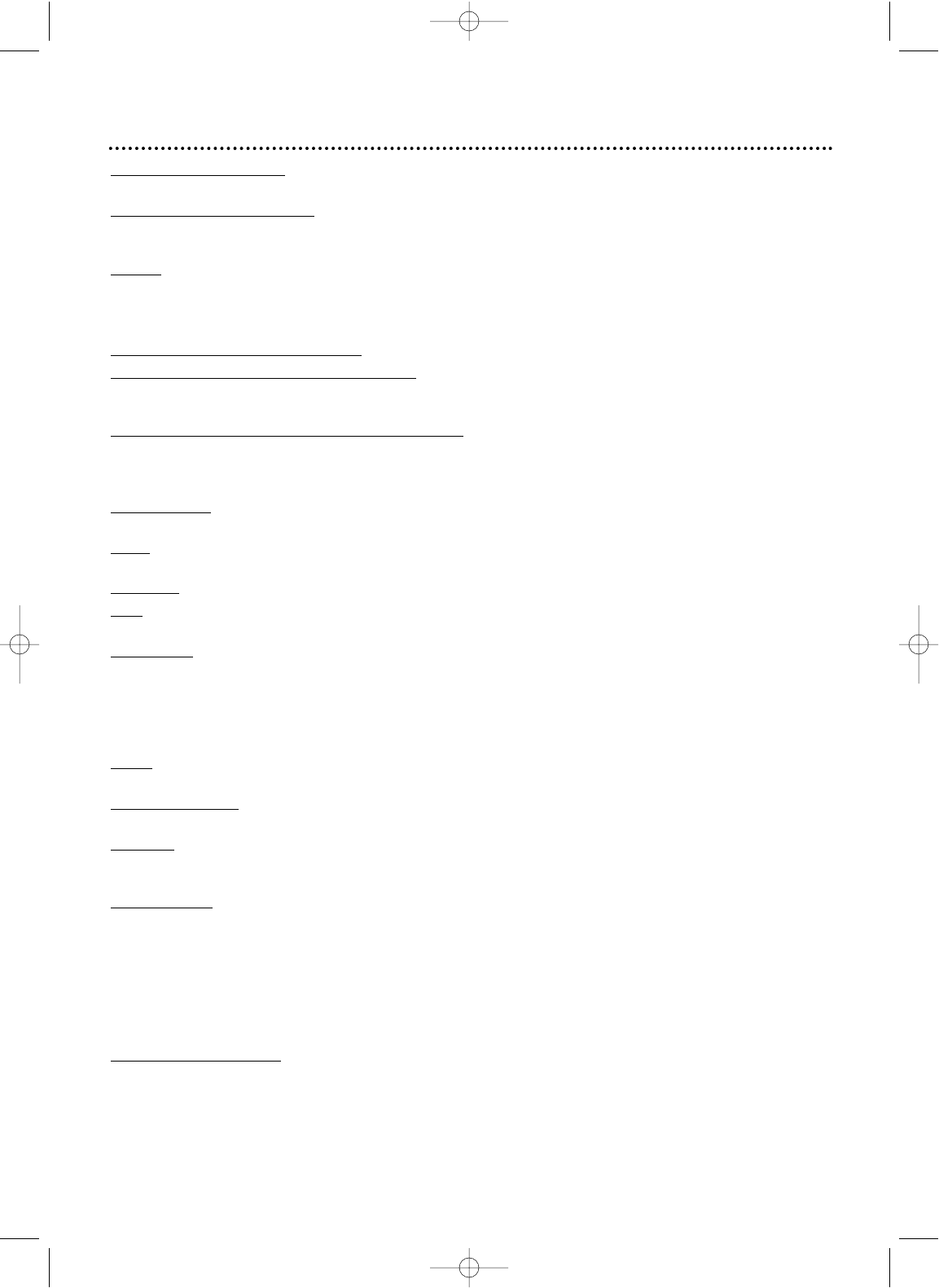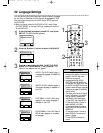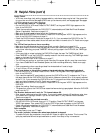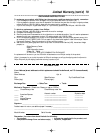
Glossary 73
AUDIO IN/OUT Jacks: jacks on the front and back of the DVD/VCR that receive
audio from another source (IN) or send audio to another system (OUT).
Automatic Channel Setup:
process in which the VCR memorizes all available TV
channels. Then, when you press CHANNEL/SKIP j/i (p/o) in VCR mode,
you only scan through channels you receive.
Bands:
settings that allow you to tune channels.
• Antenna – VHF (very high frequency; channels 2-13) and UHF (ultra high frequen-
cy; channels 14-69).
• Cable – standard channels 1-125 can be received without a Cable Box.
Cable Box/DBS Output Channel:
03 or 04.
COAXIAL DIGITAL AUDIO OUT
jack: Sends digital audio to a stereo receiv-
er, allowing you to adjust the volume at the stereo receiver. This connection pro-
vides the 5.1 channel surround sound as heard in movie theaters.
COMPONENT VIDEO OUT (Y, Cr, Cb) Jacks
: jacks on the back of the
DVD/VCR that send high-quality video to a TV with Component Video In jacks. This
connection provides the best picture quality. If you use this video connection, you
will not need the supplied yellow video cable.
Dolby Digital
: A surround sound system that provides 5.1 channel sound as used
in movie theaters.
DTS:
Digital Theater Systems. This is a surround sound system, but it is different
from Dolby Digital. The formats were developed by different companies.
Dubbing:
copying a video cassette using another VCR.
HQ:
high quality; a feature in the VCR circuitry which provides enhanced picture
detail.
Line Input:
The channel to which you set your DVD/VCR during video cassette
copying. If you use the AUDIO and VIDEO In jacks on the front of the DVD/VCR,
select channel 002 (AV FRONT). If you use the AUDIO and VIDEO IN jacks on the
back of the DVD/VCR, select 001 (AV REAR). If you accidentally enter Line Input
mode, press CHANNEL/SKIP j/i (p/o) or the Number buttons to select
another channel.
OTR:
One-Touch Recording; a timed recording on the VCR that starts immediately
and records for 30 minutes to eight hours.
RF coaxial cable:
A black cable supplied with your DVD/VCR. Use it to connect
your DVD/VCR to your TV (or Cable Box or DBS).
S-Video:
Produces a clearer picture by sending separate signals for the luminance
and the color. If you connect an optional S-Video cable, you will not need to use the
supplied yellow video cable.
Tape Speeds:
how fast the video cassette travels during a recording or playback.
The faster the tape speed, the better the picture quality. Slower tape speeds affect
picture quality, but you can record more onto a cassette.
• SP (standard play) – fastest tape speed (recording time for a T120 tape is approxi-
mately two hours); best picture quality.
• LP (long play) – average tape speed; playback only.
• SLP (super long play) – slowest tape speed (recording time for a T120 tape is
approximately six hours).
VIDEO IN/OUT Jacks:
jacks on the front and back of the DVD/VCR that receive
video from another source (IN) or send video to another system (OUT).
DVD740VR 4/12/02 12:09 PM Page 73


















